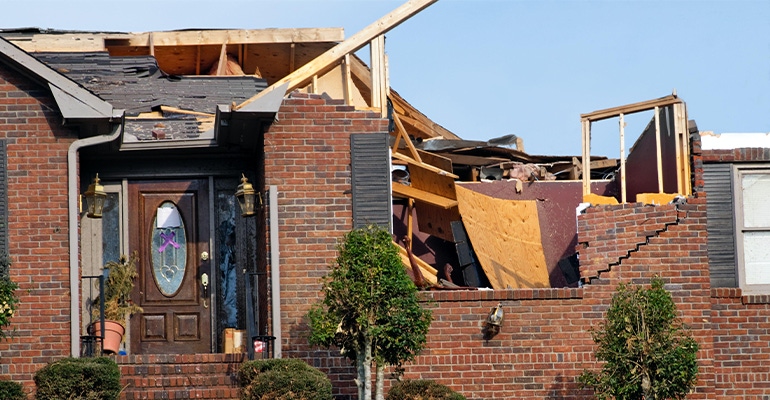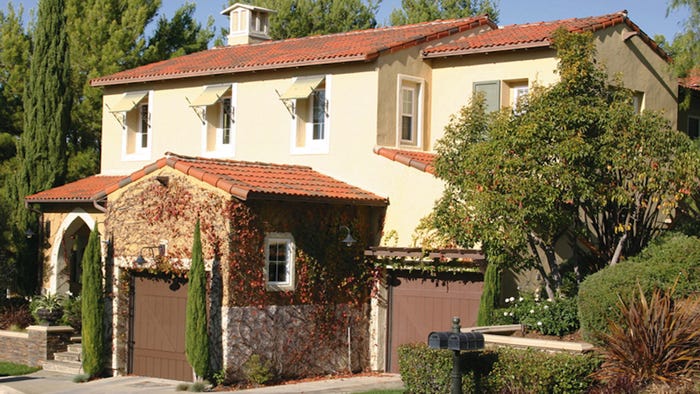Helping Homeowners After a Hurricane
According to research, damages from the six hurricanes and six tropical storms that made landfall in the U.S. in 2020 amounted to $37 billion. Weather events like those put roofers in demand and present significant sales opportunities.

Weather events that cause considerable damage, including hurricanes and tornadoes, put roofers in demand and present significant sales opportunities. As professionals, we cannot afford to overlook the fact that many of the homeowners being served have been impacted at a personal level, however. They may be in a very vulnerable state.
Serving homeowners in their time of need, sometimes before showing how your products and services will help protect their families and possessions as they move forward, is part of what it means to be a roofing professional.
In 2020, the Atlantic basin spawned 30 named storms and 13 hurricanes, far exceeding the annual average of 14 named storms and seven hurricanes that the National Oceanic and Atmospheric Administration has tracked over the past 30 years. Atlantic storm frequency has been above average this past year as well, ranking as the third most active Atlantic hurricane season on record.
According to research compiled by insurance broker Aon, damages from the six hurricanes and six tropical storms that made landfall in the U.S. in 2020 amounted to $37 billion. These storms impacted homeowners all up and down the Eastern Seaboard, many of whom were left in need of new roofs.
To a roofing company, these storm-damaged areas make for customer-rich environments, but it can be understandable if homeowners are wary, guarded or even irritated as they field calls and sales pitches. Knowing what to expect, and being prepared for more than a simple roof replacement, can help your roofing company navigate what can be a difficult time for many families.
If your company already operates in the region where a storm has occurred, make sure that your potential customers know your connection to the community. Being local can be an advantage as homeowners look for people they can trust.
If your company is not from the area, do some advanced preparation to ensure that any necessary permits, insurance and licenses are in place before soliciting business. Not all homeowners will think to check references and gather multiple quotes when faced with an immediate need, but by having your ducks in a row, you reduce the risk of negative reviews and bad word of mouth. It also shows that details are important to your company and, by extension, in the work you do.
Once in the region, if timing puts you in the immediate aftermath of a storm, show concern and compassion for the people before worrying about their buildings. Asking a homeowner if they and their family are okay, and offering to assist before speaking about their need for a new roof, is generally a better approach than opening with a sales pitch. Selling starts with a relationship, so people skills are crucial. It may even be a good idea to have a helpful checklist of what to check after a storm, along with contact information for local resources, that can be left with the homeowner.
Once you know that any immediate, personal needs of the family have been addressed, ask if the homeowner has spoken with their insurance provider. Knowing what coverage they have, and who an insurance company may permit to provide an assessment of damage, will help when coming up with a plan to help the homeowner. Insurance regulations can vary from state to state and province to province, so become familiar with the rules that apply for where the home is located. The last thing you or your customer wants is to unintentionally land in hot water.
When it comes time to assess the state of the roof, don’t overlook the homes that have only lost a few shingles. Sure, it might be relatively inexpensive to repair the damage, but don’t assume that the homeowner is happy with repair patches. They may be open to a discussion about upgrading the entire roof.
In areas prone to high winds or hail, the prospect of potentially repairing sections after each major storm could be a segue to a discussion about the benefits of replacing the entire roof with a performance laminate shingle that offers a high level of wind resistance and possibly an impact-resistance rating.
Class-4 rated shingles have been lab-tested to withstand a strike from a 2-inch ice or steel ball, simulating what a roof may face in a hailstorm. In some regions, the use of a Class-4 shingle may open the door to reductions in insurance premiums, which is a discussion that the homeowner should have with their insurance provider.
In areas that have been hit by a severe wind event, rebuilding using shingles with a high wind-resistance rating is advisable. Choosing a product with a 130 mph (210 kph) high-wind limited warranty provides peace of mind when the wind whips up. Of course, it helps to have realistic expectations. The Fujita Scale, which looks at damage intensity, shows that winds above 157 mph (253 kph) can cause walls to collapse in even well-constructed houses. Shingles become less of a concern when a home’s roof walls or foundation have been compromised by a storm.
And while a lot of discussion happens around shingle selection when replacing a roof, don’t forget that a roof is a system. To get the best performance and protection from the new roof, it should include the use of compatible accessories, such as ice and water membranes, to help protect eaves, valleys and other vulnerable areas from water penetration; synthetic underlayment to provide an additional layer of protection against water infiltration; drip edges and seam tapes; starter course rolls or shingles; and hip and ridge cap shingles that perform to the level of protecting the home, and its occupants, from the next storm that hits.
About the Author(s)
You May Also Like






